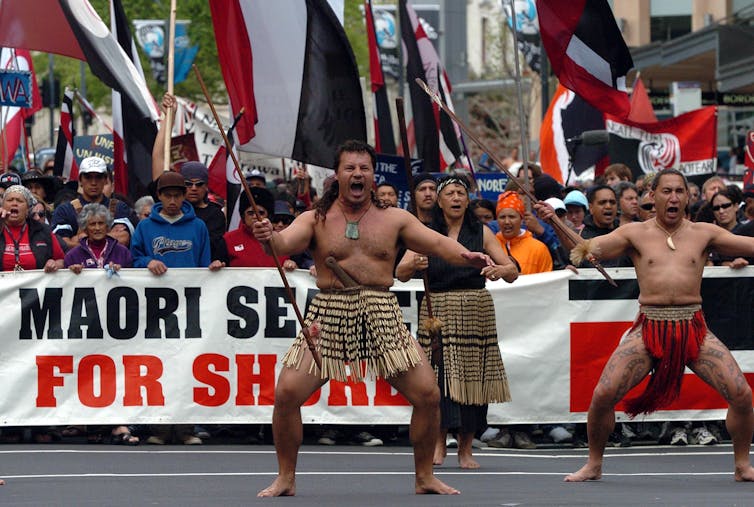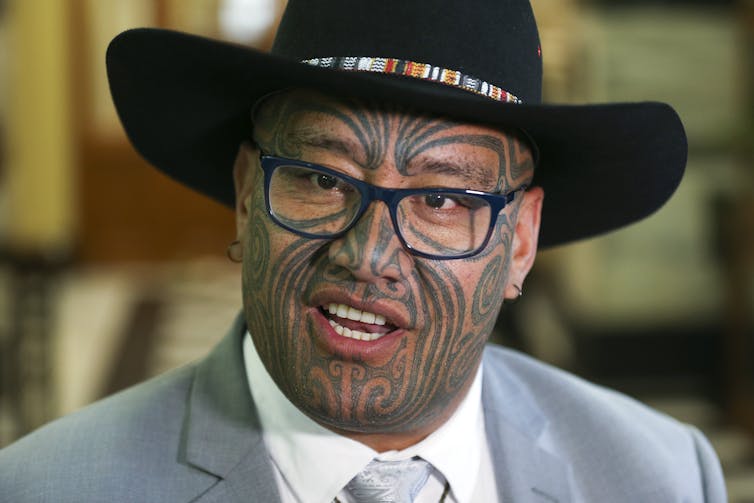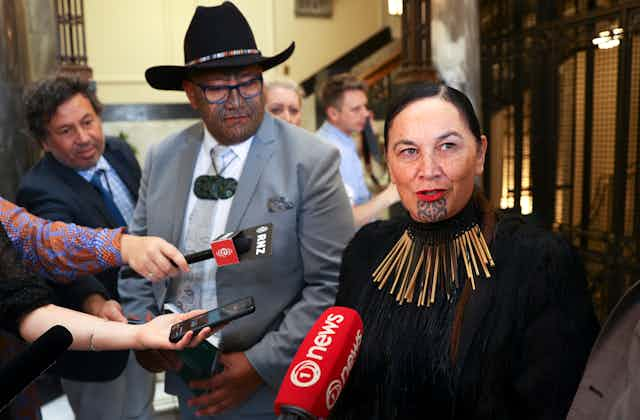In his maiden speech to parliament in 2020, te Pāti Māori co-leader Rawiri Waititi told his fellow MPs:
You know what it feels like to have a pebble in your shoe? That will be my job here. A constant, annoying to those holding onto the colonial ways, a reminder and change agent for the recognition of our kahu Māori.
Three years later, most would agree that he and fellow co-leader Debbie Ngarewa-Packer have been just that – visible, critical, combative, prepared to be controversial.
The question in 2023, however, is how does the party build on its current platform, grow its base, and become more than a pebble in the shoe of mainstream politics?
Recent polls suggest te Pāti Māori could win four seats in parliament in October. But its future doesn’t necessarily lie in formally joining either a government coalition or opposition bloc, even if this were an option.
The National Party has already ruled out working with the party in government. And te Pāti Māori has indicated partnership with either major party is not a priority.
Such are the challenges for a political party based on kaupapa Māori (incorporating the knowledge, skills, attitudes and values of Māori society) in a Westminster-style parliamentary system.

Focusing on Māori values
These tensions have existed since 2004, when then-Labour MP Tariana Turia and co-leader Pita Sharples established te Pāti Māori in protest against Labour’s Foreshore and Seabed Act.
Under that law, overturned in 2011, the Crown was made owner of much of New Zealand’s coastline. Turia and others argued the government was confiscating land and ignoring Māori customary ownership rights.
As a kaupapa Māori party, te Pāti Māori bases its policies and constitution on tikanga (Māori values), while advocating for mana motuhake and tino rangatiratanga. That is, Māori self-determination and sovereignty, as defined by the Māori version of te Tiriti o Waitangi/Treaty of Waitangi.
A tikanga-based constitution has helped shape policies advocating for Māori rights. But it has also, at times, sat at odds with the rules of parliament. Waititi, for example, called pledging allegiance to Queen Elizabeth II “distasteful”. He also refused to wear a tie, breaching parliamentary dress codes.
Between left and right
Over the years, the party’s Māori-centred policies have enabled its leaders to move between left and right wing alliances.
Under the original leadership of Turia and Sharples, te Pāti Māori joined with the centre-right National Party to form governments in 2008, 2011 and 2014. This was a change from traditional Māori voting patterns that had long favoured Labour.
During it’s time in coalition with National, te Pāti Māori helped influence a number of important decisions. This included finally signing the United Nations Declaration on the Rights of Indigenous Peoples, the development of Whanau Ora (a Māori health initiative emphasising family and community as decision makers), and repealing the Foreshore and Seabed Act.
Read more: History and myth: why the Treaty of Waitangi remains such a ‘bloody difficult subject’
However, internal fighting over the decision to align with National led to the resignation of the Te Tai Tokerau MP at the time, Hone Harawira. Harawira later formed the Mana Party.
The relationship with National proved unsustainable when Labour won back all the Māori electorates at the 2017 election. Notably, Labour’s Tāmati Coffey beat te Pāti Māori co-leader Te Ururoa Flavell in the Waiariki electorate.
Rebuilding te Pāti Māori
Waiariki was front and centre again in the 2020 election, where despite Labour’s general dominance across the Māori electorates, new te Pāti Māori co-leader Rawiri Waititi reclaimed the seat. The party also managed to win enough of the party vote to bring co-leader Ngarewa-Packer into parliament with him.
Sitting in opposition this time, the current party leaders have been vocal across a range of issues. The party has called for the banning of seabed mining, removing taxes for low-income earners, higher taxes on wealth, and lowering the superannuation age for Māori.
It hasn’t all been smooth sailing. Some policies, such as 2020’s “Whānau Build” have caused discomfort. Aimed largely at addressing the housing crisis, Whānau Build identified immigration as the root of Māori homelessness.
It was a sentiment more often associated with the extreme right, and the party has since apologised for that part of the policy.

Contesting more seats in 2023
Those bumps and missteps notwithstanding, recent polls show just how competitive te Pāti Māori has become in the Māori electorates.
Ex-Labour MP Meka Whaitiri – an experienced politician who has held the Ikaroa-Rāwhiti electorate since 2013 but left to join te Pāti Māori this year – is in a tight race to regain her seat against new Labour candidate Cushla Tangaere-Manuel.
Co-leader Ngarewa-Packer is also running a close race against Labour candidate Soraya Peke-Mason for the Te Tai Hauāuru electorate – a Labour stronghold.
But te Pāti Māori has also shifted from its previous focus on the Māori electorates, with Merepeka Raukawa-Tait standing in the Rotorua general electorate.
The Māori Electoral Option legislation, which came into effect this year, now allows Māori voters to change more easily between electoral rolls. In future, te Pāti Māori may find it can best to serve Māori by standing candidates in general electorates.
Read more: The tie that binds: unravelling the knotty issue of political sideshows and Māori cultural identity
Broader social change across Aotearoa New Zealand has also likely been an important contributor to the success of te Pāti Māori, with greater understanding of te Tiriti o Waitangi, tikanga and te reo Māori among voters.
Indeed, the current party vision of an “Aotearoa Hou” (New Aotearoa), includes reference to tangata tiriti, a phrase being popularised to refer to non-Māori who seek to honour partnerships based on te Tiriti o Waitangi.
According to the most recent polling, te Pāti Māori may not be the deciding factor in who gets to form the next government come October.
But the party’s resilience and growth after it’s electoral disappointments in 2017 and 2020 show an ability to rebuild. In doing so, it is carving out it’s place in New Zealand’s political landscape.
And if te Pāti Māori is not the kingmaker in 2023, it is still on the path to influence – and potentially decide – elections in the not-too-distant future.

